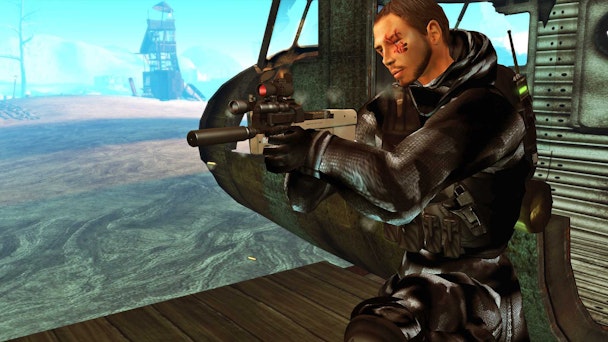Second Life can counter ‘existential risk’ Meta brings to metaverse, says founder
Interest in the metaverse is heating up while a Meta-branded Facebook has appointed itself architect of this new frontier. It all has Second Life creator Philip Rosedale worried. We catch up with the pioneer of digital worlds to hear about his concerns.

Second Life founder believes it can counter 'existential risk' Meta brings to metaverse
Second Life launched in 2003 as an online multimedia platform where users could create avatars and live out fantasy lives in a digital world. Whether as paupers or princes, mages or mermaids, pirates or cats, many went to role-play. It was the petri dish where we learned just how odd humans could be when left to their own devices.
So much more than a glorified chat room, players could contribute to a world economy, create goods, buildings and content that was often adult in nature. Offered total freedom, players often tended to explore their primal instincts.
Sound familiar? The constant conversation around the metaverse has certainly left Second Life’s founder, Philip Rosedale, with feelings of deja-vu. He’s worried about what will happen if this time it’s in the hands of mighty Facebook.
“The ad behavioral targeting surveillance business models that we have on the internet today with products like Facebook and YouTube – translating that to avatars has a tremendous amount of existential risk for society.
“It’s important we don’t allow that to happen. Companies selling you experiences based on surveillance and advertising would be a terrible outcome for humanity. Especially if it is a single company, but even with multiple companies doing it.”
The issue, he tells us, is control. For the very concept of the metaverse to work, says Rosedale, it has to be decentralized.
In 2013, when Second Life was peaking at a million monthly active users and had saw $3.2bn in total transactions for virtual goods in its first decade, Rosedale was anticipating how big a space would be needed to house everyone and their leisure time.
“At the very beginning, I thought of Second Life as just being an enabling space, but we spent a lot of time on the technology of letting people build things and live with each other. Which is still the thing that is the most magical about Second Life as an experience.”
Second Life, while charging fees on transactions, doesn’t bias user behavior and doesn’t want you to log in more, adds Rosedale. “It doesn’t care about those things. There are some marketplace transactions that have fees and, if you own land in the virtual world, you pay a fee to the company – a hosting fee for that land. By using that business model, Second Life makes more revenue per user with less users than YouTube or Facebook does.”
He says businesses should be looking to build a free access, inclusive, fee-based model that makes as much money for a company as any ad and behavioral targeting and surveillance can. People just have to be willing to pay for it, and Second Life data suggests they would be.
Second Life never reached Facebook’s scale. Nothing has. But while a distant memory for many, it still boasts over 900,000 active users and Rosedale – who talks proudly of the company’s importance to the history of the metaverse – has just returned as a strategic advisor as it ramps up its own significance in the space. His spatial audio company High Fidelity acquired an interest in Second Life developer Linden Lab earlier this year.
Second Life is a place for grownups doing things that we would “vaguely call metaverse today”, according to Rosedale. “At any moment there are 100 live music performances going on, there are people wandering around shopping malls and chatting with each other.
“There are a lot of the pieces that we want to see happen eventually. What we have seen during Covid-19 is that it has just continued to smoothly grow by simplifying the experience. Improving the socialization of an avatar experience is so critical.”
And he sees these spaces as branded havens on par with the Marvel Cinematic Universe. “Today, it’s something a brand would like more than a normal person would. If you look at video games today, the idea of taking a car from Grand Theft Auto and driving it into Among Us [a completely different type of video game] doesn’t really make any sense except to a brand.”
Even Second Life has work to do to realize the potential of metaverse. Rosedale points to the syncing of virtual facial expressions and audio as an example.
“When we do get it right, the average person will find it interesting to have their shirt or tennis shoes go with them from one concert to another. The idea of a social experience, like going to a concert, where you really could look to the left and look to the right and see other people – it’s doable, but it’ll probably happen on the desktop before the VR goggles.“
And for now, it’s mostly for kids. Roblox, Fortnite and Minecraft have been highly successful spaces, but almost entirely for children. Rosedale says it’s not quite convertible into a grown-up experience. “Roblox has created a great deal of economic opportunity, but comparing Second Life to Roblox – we think there are actually more people making more money by creating things for each other in former than the latter.
“We’re pretty sure from the numbers that we’ve run, but, of course, the Roblox community is much larger. That’s good news, right? Because it suggests that, as we scale up a more grown-up experience of a metaverse with things like concerts and whatnot, it seems likely that there will be an economic creative underpinning it. And that can be empowering if we do it right.”
For more on the exciting new opportunities for marketers in this rapidly evolving space, check out The Drum’s Metaverse hub.

